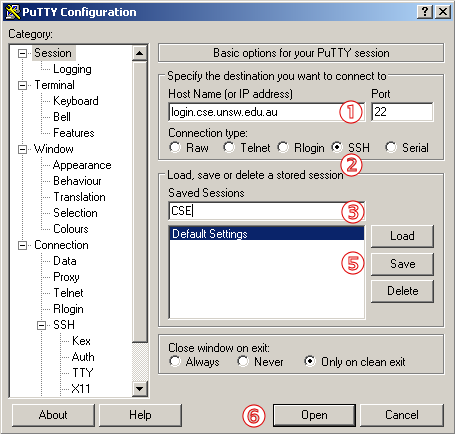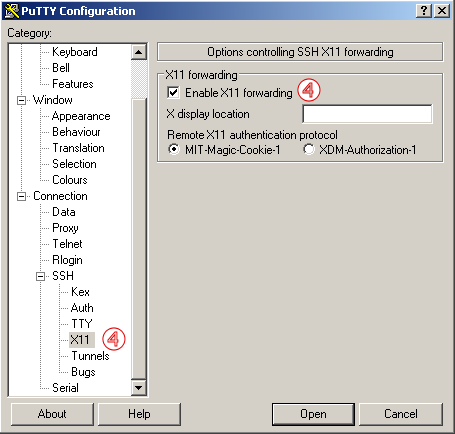What is PuTTY ?
PuTTY is a Windows SSH client that allows you to connect to the CSE servers, giving you a terminal window like you use in the CSE laboratories. PuTTY can be found on the CSE homecomputing CD which can be borrowed from the CSE Help Desk OR can be downloaded from: http://www.cse.unsw.edu.au/~homecomputing/
What is Xming ?
Xming is a standalone open source X Server for Windows. Programs that use a graphical user interface like Kate require an X server on your home computer. Xming can be found on the CSE mirror at http://mirror.cse.unsw.edu.au/pub/xming/ You should download the setup program and optionally the fonts package.
Installing PuTTY and XMing
Run the setup programs for PuTTY and Xming. We suggest that you choose the default options for the installation, and choose the options to create icons for PuTTY and Xming on the desktop.
Xming must be running before you run PuTTY. When it is running, you will see an X icon in the system tray (the bottom right hand side of your Windows screen). If you forget, you can always run it after running PuTTY, even if you are logged on to the CSE login server.
Configuring PuTTY and XMing
When you run PuTTY for the first time, you will see a window like the one below

STEP 1 - In the box below Host Name (or IP Address) enter login.cse.unsw.edu.au. If the lecturer for your subject has suggested you use a specific server, enter it instead. For more information about CSE servers and their uses see: http://www.cse.unsw.edu.au/help/computing/facilities/computers/index.html
STEP 2 – Make sure SSH is selected.
STEP 3 – Enter login.cse.unsw.edu.au in the box below Saved Sessions.
STEP 4 – Click the [-] to expand SSH from the window on the left (if necessary) and click X11. You should see this screen. Ensure that the checkbox for Enable X11 forwarding is selected.

After you have clicked the check box, scroll the left hand window back to the top and click on the Session heading. You should see the same screen as in Step 1
STEP 5 Click the Save button. The host name you entered should now appear below Default Settings. In the future, you will be able to connect by simply double-clicking this host name.
STEP 6 Click the Open button.
STEP 7 If you see a window like this: click the Yes button.

STEP 8 When you see: login as: enter your CSE username.
STEP 9 When you see: username@servername.cse.unsw.edu.au’s password: enter your CSE password.
YOU ARE NOW REMOTELY LOGGED IN TO YOUR CSE ACCOUNT